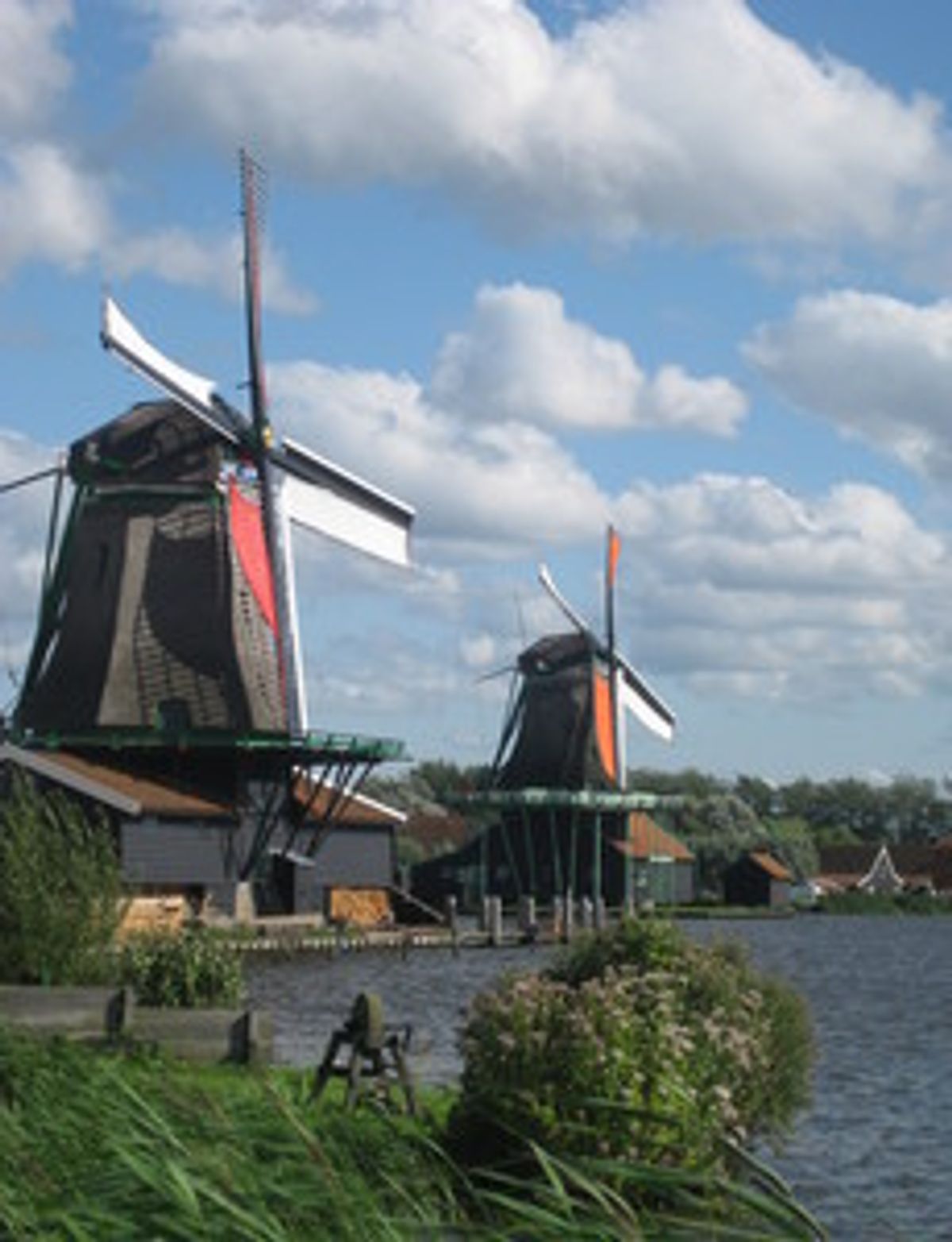A more sober mood has settled over the wind industry this year. In the United States, where 10 gigawatts of capacity was added in 2009, up a record-setting 20 percent from the previous year, new turbine installations this year are expected to be closer to 6 GW. On August 18, the top Danish wind manufacturer Vestas saw the value of its shares drop 20 percent, after a second straight quarterly loss and issuance of a profit warning. Because of several adverse trends, some of the countries that have pushed wind most aggressively may be approaching a saturation point where further turbine investment would be counter-productive. Wind meets 20 percent of electricity demand in Denmark, 14 percent in Spain and Portugal, and 8 percent in Germany, according to the U.S. Department of Energy's 2009 Wind Technologies Market Report.
An earlier DOE report famously said that wind could in principle supply 20 percent of U.S. electricity by 2030. Will that actually happen? EnergyBiz's Marty Rosenberg recently got a telling answer from Iberdrola executive Don Furman: "Certainly not in the next 20 years." The most Furman would say was that the United States would be getting "a substantial part" of its energy from wind within 50 years.
Wind currently satisfies about 2.5 percent of electricity demand in the United States, and there's ample room for much more growth. In the "interconnection queues" maintained by regional operating systems in the United States--ranked requests for transmission to accommodate added generating capacity--wind ranks Number 1 at 300 GW, far ahead of the next contender, natural gas. With about 18,500 Americans making turbines and turbine components and 85,000 working in the U.S. industry overall, the fraction of wind equipment that the United States imports has dropped to 40 percent from 50 percent, and General Electric has secured a global position as one of the top producers, giving the Danes and the Germans a run for their money.
But there also are limits. DOE registered a rather sharp increase in "wind curtailments" in 2009--orders to generators to stop feeding energy from turbines into the grid because demand was low or transmission lines couldn't handle the load. Higher curtailments contributed to a drop in average U.S. capacity factor--the percentage of the time a wind generator is producing at its maximum possible rate--after years of steadily improving capacity.
That's important because intermittent energy sources like wind and solar have by nature much lower capacity factors than baseload coal, gas, and nuclear. The 2009 drop in the U.S. wind capacity factor to 30 percent from 34 percent the year before means in effect that for every watt of coal, gas, or nuclear capacity installed, about three times as much wind capacity has to be built to deliver equivalent output over time.
Other limits include an unexpected increase in wind operating and maintenance costs, noted in a post earlier this year, and diminishing returns from wind as the best turbine sites are occupied. As the International Energy Agency charted in its generating electricity report this year, wind costs vary much more widely than traditional baseload generating costs, especially in the United States. And so it will not be good news for wind if it gets tougher to keep making average new installations cheaper.
Then too, perhaps, there is a growing unease in some places about the aesthetic impact of huge turbine towers. The traditional Dutch windmill, though a mighty machine capable of grinding minerals and moving water, also was mighty cute. Today's much larger and much more industrial turbines relieved monotony when they first were installed in large numbers in the North German plains and Jutland's rolling fields. Strung along a mountain ridge, they can make a stirring, even exciting, sight.
But I noticed this summer driving from the densely populated Rhine delta through Germany's Ruhr rustbelt to the unspoiled farmlands south of the Mosel that the opposite also can be the case. In the congested industrial areas of Holland and northwest Germany, big turbines make the landscape look even more congested and industrial. And in the fields that spread from Germany's Southwest to France's Alsace, which are unchanged from Napoleon's time, turbine towers--like transmission towers--are not a welcome addition.
All this is just a reminder that while wind is going to be a big part of the answer to future green energy needs, it will not be the whole answer.
